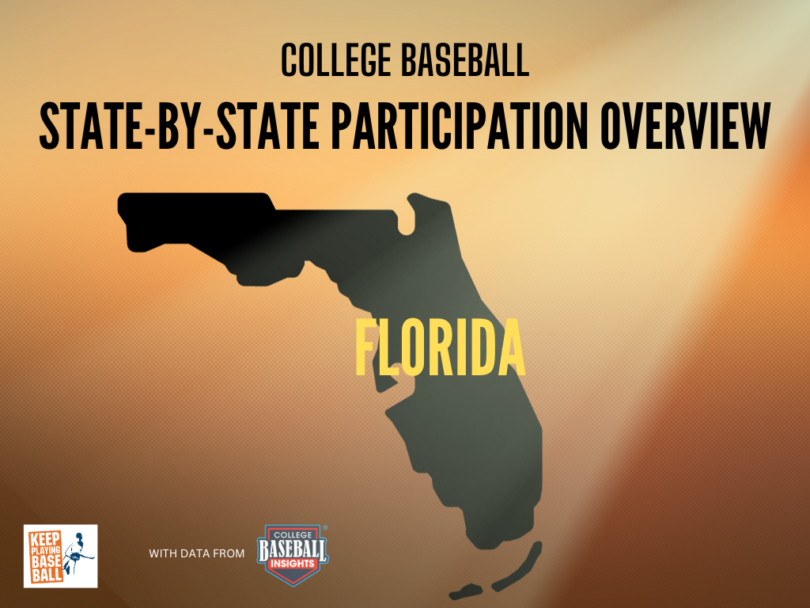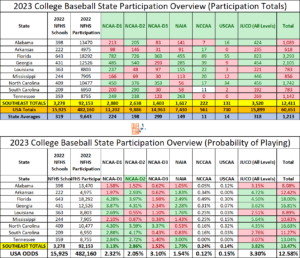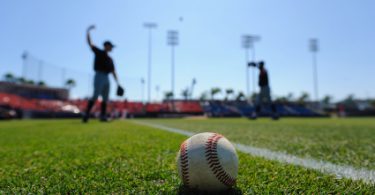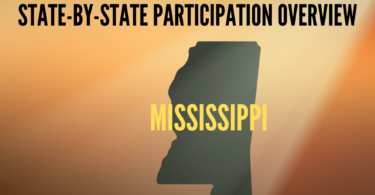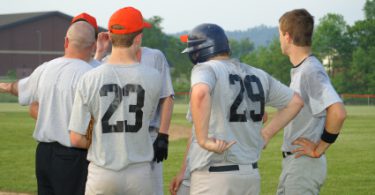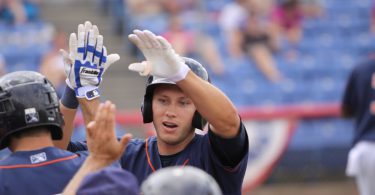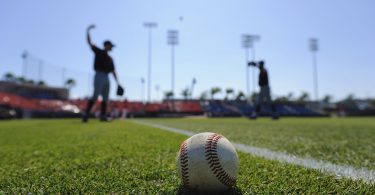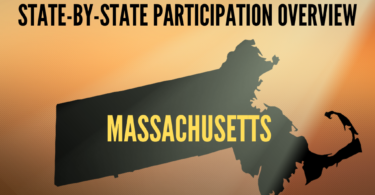You’re interested in playing college baseball, but what are your chances of making it to the next level? While many tout national probability as gospel, it turns out your odds of playing at the next level vary greatly depending on where you live.
If you live in Florida and are wondering what percentage of high school graduates from your state play at each college level and where they are playing, you’ve come to the right place. In this article, we team up with our friends at College Baseball Insights to provide you with state-level overview of your chances to play at the next level.
You can see an overview of our resources, methodology, and limitations on our College Baseball Participation Overview Main Page, as well find overviews on other states and regions.
Florida by the Numbers
In the table below, you’ll see how many high school players from Florida are playing at each level of college baseball, the probability of playing at each college level, and how Florida compares nationally and to other states in the Southeast Region. You can see the complete Southwest breakdown HERE.
Where Are They Playing?
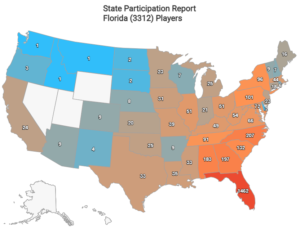
Florida Players by Division (3,312)

Image and data credit: College Baseball Insights
The Breakdown
Florida unsurprisingly plays host to the biggest high school baseball population in the Southeast with 18,292 participants. That’s roughly 5,000 more high school players than Alabama, who has the second most participants in the region. Florida is often talked about as a hotbed for baseball, and rightfully so. The state’s overall college baseball participation of 18% is well above the national (12.58%) and regional (13.47%) averages, and sets the pace for the Southeast. Not only is it the best overall participation rate in the region, it’s good for 5th best in the country. In other words, Florida is living up to its reputation.
Interestingly, Florida has created the best college baseball pipeline in the region despite not being tops in the southeast for any level of college baseball. In spite of no major standout level, Florida is consistently well-above average for every level except D3, where its 1.98% participation rate falls below the national average (3.10%) and a bit above the struggling regional average (1.52%). The D3 rate is actually surprisingly high, given there are no D3 options in-state and surrounding states aren’t much better.
You’ll notice below that Florida’s successful D1 (4.28%, 2nd in region), D2 (3.97%, 3rd in region), NAIA (2.49%, 2nd in region), and JUCO (4.50%, 2nd in region) participation rates are solidly above the national and regional averages. For the smaller Christian-based levels, NCCAA and USCAA, Florida’s respective 0.49% and 0.30% participation rates are good for 1st and 2nd best in the region.
With 13 D1, 14 D2, 8 NAIA, 23 JUCO, 3 NCCAA, and 1 USCAA programs in-state, Florida players have plenty of places to play after college. The sunshine state, notorious for year-round baseball weather, is also a heavily recruited state for programs from all over the country.
Want to see additional states and regional breakdowns? Find them HERE.
Limitations
This article was written with data and insights from 3rd party sources, College Baseball Insights and NFHS High School Participation Data. Data and insights are subject to revision and/or change. We’ve attempted to display as accurate a picture as possible with the information that is available. Readers should be aware that college baseball roster data is fluid and changes throughout the year. Every attempt is made to reconcile data and keep up with changes, but this article may not reflect the changes or updates from 3rd parties. Insights cannot account for gap year programs, misreported roster information, or other inaccuracies which may slightly alter the numbers and percentages used in this article. Insights are subject to change and are based on best available information.

